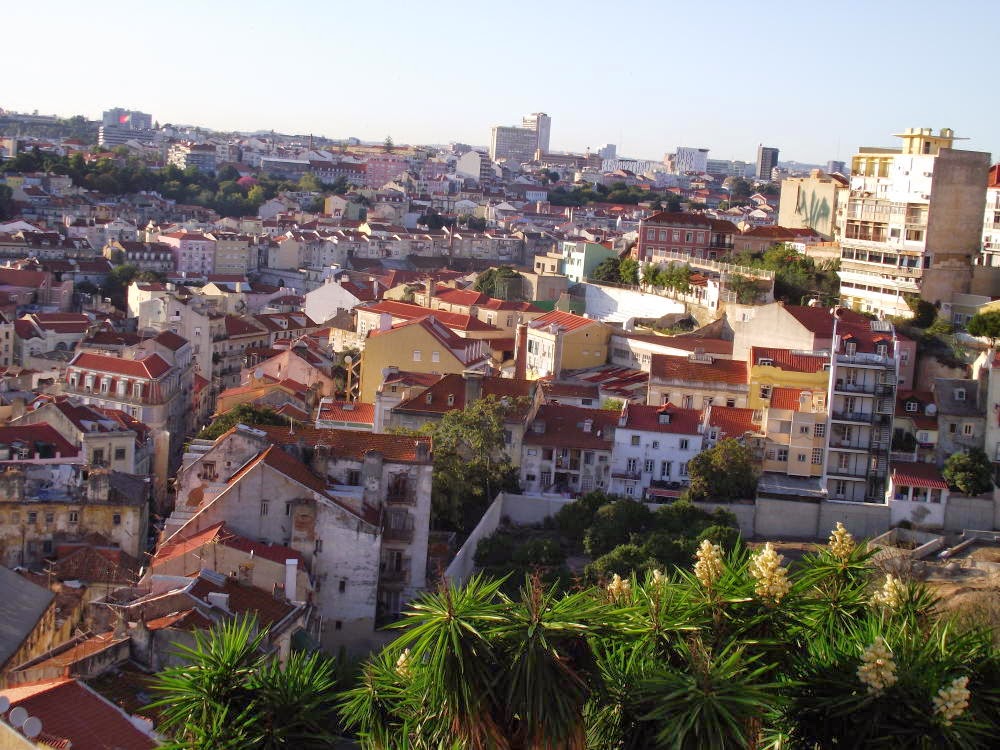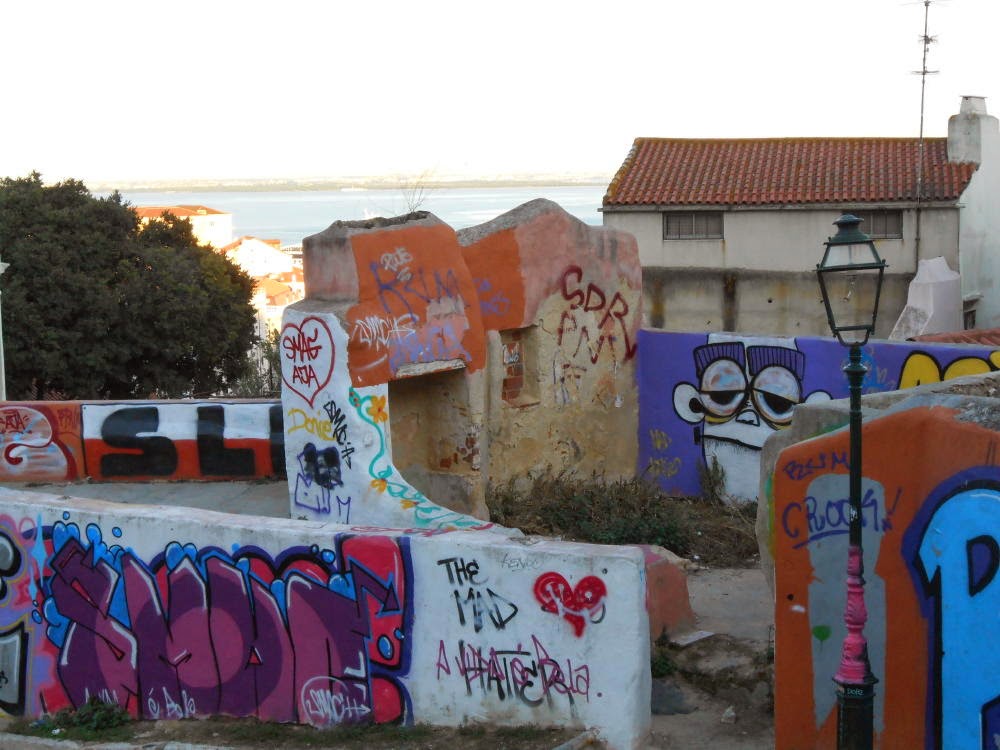It was about a four hour ride by train from Santiago de Compostela to Lisbon. We saw some nice sites along the way.
Lisbon is the capital and largest city in Portugal with a population of nearly 4 million people.
It lies in the western Iberian Peninsula on the Atlantic Ocean and the River Tagus. Lisbon is one of the oldest surviving cities on the planet, predating both Rome and Paris. It is also considered the world’s first global city because of its importance in finance, commerce, media, entertainment, arts, international trade, education and tourism.
We really enjoyed our ride through the city on Tram 28, a CrAZy Cable Car Ride - it's one of the most characteristic symbols of Lisbon.
It went up and down steep hills and twisted around narrow streets all through the city.
 |
| It was VERY crowded and every stop had a long waiting line. |
 |
| Tram 28 is a great place for pick-pockets. |
It was unbelievable how tight the corners were and how close the sidewalks were. I wouldn't want to be a pedestrian on the street, that's for sure!
Estrela Basilica is an ancient convent, built by order of Queen Maria I of Portugal, as a fulfilled promise for giving birth to a son - Jose, Prince of Brazil. The official name of the church is the Basilica of the Sacred Heart of Jesus. Construction started in 1779 and the basilica was finished in 1790, after the death of José caused by smallpox in 1788.
 |
| Estrela Basilica |


Conquered in 1147 by Afonso Henriques for the Christians, the Moorish Castle was a major victory in the reconquest of Portugal. Today the Castle is in ruins, although it was restored in mid- nineteenth century, and offers spectacular views to its visitors.
We took a long walk up the hill and on the way we saw many ruins of old buildings that were destroyed in the big Lisbon earthquake in 1755 – they stand there like a memorial. In this earthquake, about 40% of Lisbon’s inhabitants died. It was one of the deadliest earthquakes in world’s history. It was really strong and lasted for 9 minutes. There was a terrible Tsunami immediately following. It happened on the 1st of November – The All Saints Day – which means that a lot of people were in churches (that collapsed) and a lot of candles were everywhere (big fires afterwards). Estimates of those who died were between 10,000 and 100,000.
Graffiti was everywhere, but it really added to the uniqueness of the area.
 |
| I'm really enjoying myself wandering around from building to building. |
The Praça do Comércio ( Commerce Square) is situated near the Tagus River. The square is still commonly known as Terreiro do Paço ( Palace Square), because it was the location of the Royal Ribeira Palace until it was destroyed by the great 1755 Lisbon Earthquake. After the earthquake, the square was completely remodeled.
 |
| See how Rich captured the sliver of a moon in the middle of the statue. |
 The Christ the King statue - Cristo Rei is a Catholic monument and shrine dedicated to the Sacred Heart of Jesus Christ overlooking the city of Lisbon. The giant statue in cement was erected to express gratitude because the Portuguese were spared the effects of World War II.
The Christ the King statue - Cristo Rei is a Catholic monument and shrine dedicated to the Sacred Heart of Jesus Christ overlooking the city of Lisbon. The giant statue in cement was erected to express gratitude because the Portuguese were spared the effects of World War II.
After a LONG walk, we got back to our host's house. They were preparing a very gracious meal.
 |
| Kirsten & Jens work hard in their small kitchen |
 |
| They are making 'spatzle' - some yummy noodles. |
 |
| Rich loved their intellectual conversation. |
Dinner is served! Fillet of Pork wrapped in bacon. Stuffed mushrooms, and Spatzle Noodles
 |
| Scrump-dilly-iscious! |
Another day in Lisbon tomorrow!


























No comments:
Post a Comment